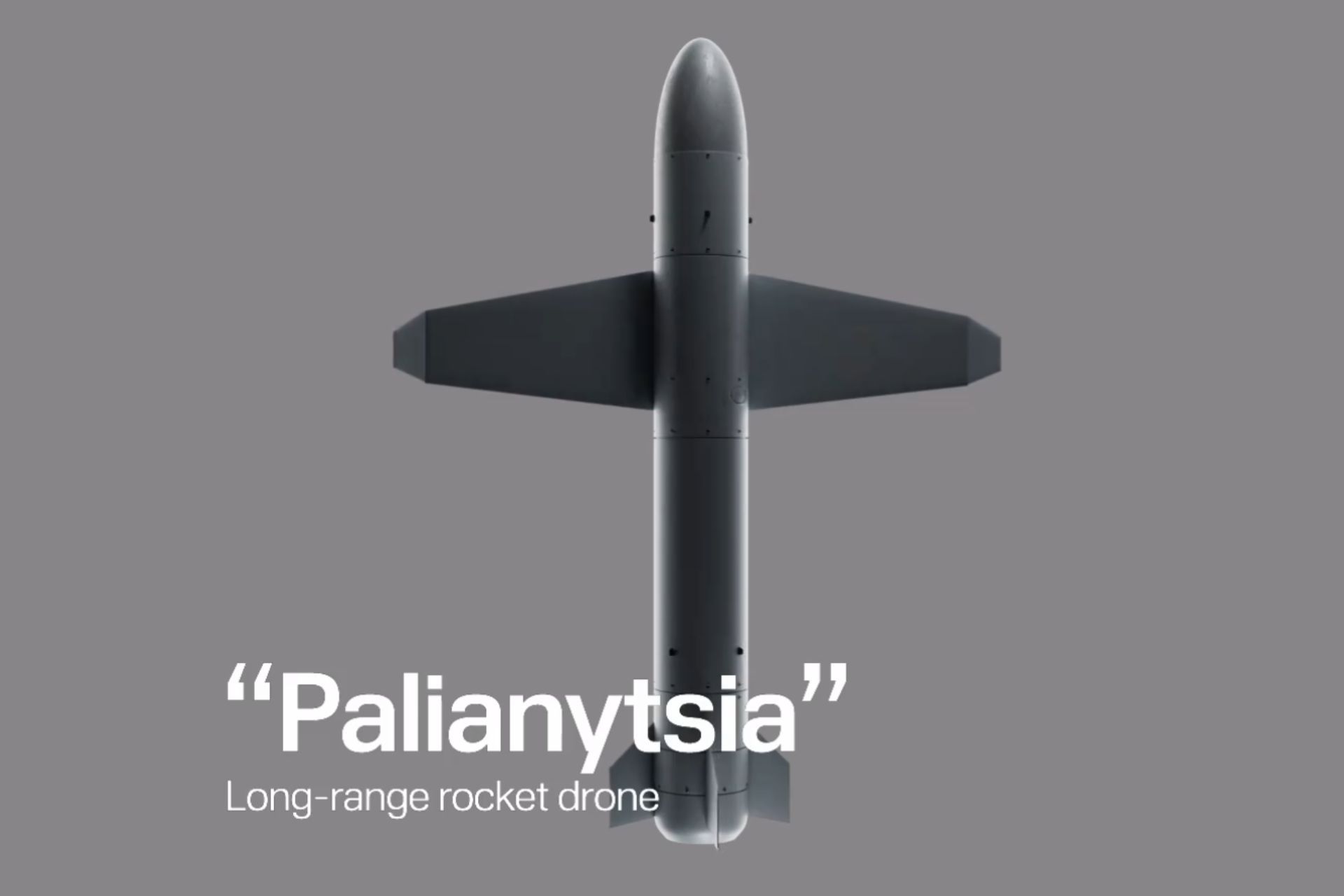Breaking News
Ukraine Deploys New Palianytsia Missile-Drone in Strike on Russian Military Base.
On August 24, 2024, Ukrainian forces launched a new hybrid missile-drone, named Palianytsia, against a Russian military base in Voronezh Oblast. This marked the first confirmed use of this new weapon system, which successfully targeted the base, causing a major fire and multiple secondary explosions. The attack is part of a broader strategy aimed at neutralizing Russian military assets deep within Russian territory, as Ukraine continues to develop indigenous capabilities in response to restrictions on the use of Western-supplied weapons.
Follow Army Recognition on Google News at this link

This long-range attack drone, powered by a turbojet engine, is equipped with a JetCat P400-PRO micro-turbojet, weighing 4 kg and generating 43 kg of thrust (Picture source: United24)
The Palianytsia missile-drone, designed to strike Russian military airfields, represents a critical advancement for Ukraine's military efforts. The weapon is intended to neutralize platforms used to launch thousands of missiles and glide bombs at Ukraine since the start of the full-scale war. President Volodymyr Zelensky confirmed the successful deployment of the Palianytsia during his Independence Day speech on August 24, stating, "Today, we witnessed the first successful combat use of our new weapon, the Palianytsia missile-drone. This is a completely new class of weapon—our own Ukrainian innovation."
The name "Palianytsia" carries symbolic significance, referring to a traditional Ukrainian bread, and is also known for being difficult for Russian speakers to pronounce correctly. This choice of name reflects Ukraine's ongoing efforts to assert its national identity amid the conflict. The word "Palianytsia" became a linguistic shibboleth during the Russian invasion of Ukraine in 2022, used to distinguish Ukrainians from Russians due to pronunciation differences. This has reinforced its cultural importance, symbolizing Ukrainian identity and resistance.
A video released on August 25 provided an overview of the Palianytsia's development and capabilities. This long-range attack drone, powered by a turbojet engine, is equipped with a JetCat P400-PRO micro-turbojet, weighing 4 kg and generating 43 kg of thrust. Its structure is primarily fiberglass with wooden frames, and it features a large fuel tank to maximize range. The Palianytsia is also armed with a 20 kg blast-fragmentation warhead. The drone has an aerodynamic design similar to traditional cruise missiles, with a central body, forward-positioned wings, and a tail section equipped with four control surfaces.
The drone is designed for easy transport and storage, with detachable wings and tail, allowing for quick access to the engine and reducing space requirements during transport. The Palianytsia can strike long-distance targets, including two dozen Russian military airfields. The weapon was developed in a remarkably short time, just a year and a half. Additionally, the cost of the Palianytsia is reportedly lower than that of similar systems, making it a more sustainable option for Ukraine as the conflict continues.

The drone is designed for easy transport and storage, with detachable wings and tail, allowing for quick access to the engine and reducing space requirements during transport. (Picture source: Covert Shores)
Ukraine’s Minister for Strategic Industries, Oleksandr Kamyshin, also stated that the Palianytsia is a new class of rocket drone, designed for precision strikes on military targets. This system represents a new method of retaliation against the Russian aggressor. Specific details about the targets or the exact location of the strike with the Palianytsia have not been disclosed, reflecting the sensitive nature of the operation. However, the announcement highlights a significant advancement in Ukraine’s military capabilities, particularly as the country continues to defend itself against Russian aggression.
The development and successful deployment of the Palianytsia missile-drone demonstrate Ukraine's growing reliance on its own defense manufacturing capabilities. This new weapon adds a strategic option to Ukraine’s arsenal, enabling the disruption and neutralization of enemy operations in critical locations where Western weapons cannot be used.


























